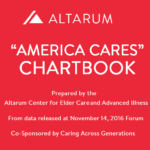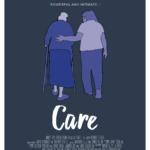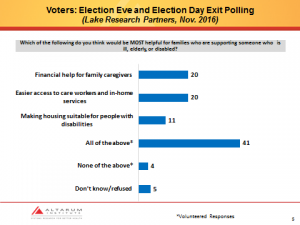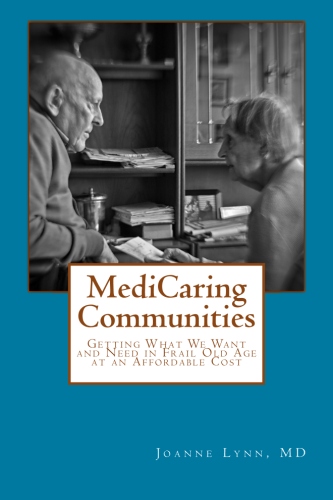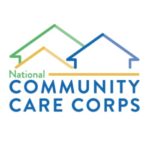
By Sarah Slocum, Altarum Program to Improve Eldercare
We live in a country of neighborhoods. Our geographic neighborhoods often bond around a common ethnicity, a religion, similar economic status, or a group of occupations or employers. In large cities, perhaps it’s a school district. Across urban, suburban and rural areas, these factors that identify neighborhoods and communities are part of what helps us define where we live. This is particularly true of many frail elders and people with disabilities who often manage their daily needs with help from informal networks of individuals living nearby. A new initiative, funded by the federal Administration for Community Living (ACL), will create a formal network of volunteers ready to provide supports at the community level.
This brand-new effort, the Community Care Corps, will work with local organizations across the country to identify and develop tools that will be available to anyone wishing to start or strengthen a formal network of local volunteers. The project aims to develop the methods to support and enable these neighborly arrangements and create a network of volunteers who provide non-medical support to older and disabled people living in our communities — thereby enabling them to stay in their homes and remain connected to their neighborhoods. The Community Care Corps will identify best practices, standardize elements of high-performing volunteer programs in many different types of communities, and make starting and sustaining a volunteer support program much easier for any local organization to accomplish.
ACL has awarded St. Louis, Missouri-based Oasis Institute a five-year grant, with $3,800,578 in first-year funding ($19.7 million over 5 years) to stand up the Community Care Corps. In partnership with the Caregiver Action Network (CAN), the National Association of Area Agencies on Aging (n4a) and Altarum’s Program to Improve Eldercare, Oasis will help to develop and refine innovative models for volunteers to assist family caregivers, older adults and people with disabilities. Oasis will serve as the administrator of the project, awarding grants to communities nationwide. Community organizations will propose various creative ways of serving different populations, and a range of non-medical services, such as food, transportation, and other supports. The four lead organizations are eager to see what innovations they propose.
“This is a unique opportunity for Oasis to embrace a new role on the national stage as a grant maker for innovative caregiving projects,” said Paul Weiss, president of The Oasis Institute. “As a pioneer in healthy aging for more than 35 years, we recognize caregiving as a challenge that impacts families in ways that can limit quality of life tremendously. We are excited to be partnering with some of the most knowledgeable organizations in this sector to encourage creative approaches that can improve the lives of those who find themselves in the position of providing ongoing care for loved ones.”
Oasis will disseminate an RFP through multiple channels in late 2019, with anticipated grant announcements for the first year of funded pilot programs to be announced in spring 2020. Local funded programs will implement innovative approaches to recruit, train, and sustain volunteers who will provide neighborly help to disabled adults and their experiences will generate a toolkit of best practices for use nationwide.
“Volunteers have long played a key role in the reach and success of programs and services supported by the aging and disability networks,” said Edwin Walker, Deputy Assistant Secretary for Aging at the Administration for Community Living. “ACL is pleased to have this opportunity to further strengthen the important role of volunteers and looks forward to working with the Oasis Institute and its partners to achieve this goal.” An excellent article in the Kaiser Health News details this national initiative.
A local project is already underway in Livingston County, Michigan, where Livingston County Catholic Charities (LCCC) and Altarum are working to expand and update their volunteer services to elders and people with disabilities in their homes. LCCC was awarded a one year grant from the Michigan Health Endowment Fund to create a toolkit that will be available to any other organization that wants to set up a similar program to provide transportation, shopping, light housekeeping, companionship, and a number of other non-medical services to community members in need. LCCC is already well known for their volunteer services and this Care Corps project will enhance their ability to expand and provide more volunteer hours of service, as well as formalizing their volunteer recruitment, training, and retention strategies. The LCCC/Altarum project is one example of the type of community based effort Altarum will evaluate local efforts and will help identify best practices and ideas that are ripe for replication. The experience of people receiving support will be crucial in identifying the most effective strategies for delivering non-medical support and volunteers will be able to tell us a great deal about how well the program meets their needs. We expect many different and creative models arising from local projects and do not expect one model to fit all locales. As with the particular identity of a neighborhood, groups of volunteers and care recipients will have varying cultural and geographic characteristics and the Community Care Corps in their area will need to meet those needs.
The Community Care Corps is arriving at a time when a shortage of paid caregivers is putting a lot of pressure on community based care systems. Many service providers already report great difficulty filling jobs and retaining workers to provide care. Some worker advocates view volunteer efforts as competition, but the Community Care Corps partners see the roles volunteers will fill as part of a set of solutions that will support family caregivers and perform certain tasks that will lighten the load on paid caregivers. The same groups setting up the Community Care Corps are also highly interested in better wages, training, and career opportunities for direct care workers. Pursuing improvements in both the paid and unpaid caregivers’ situations will relieve some of the pressure on systems that will only intensify as our nation ages and more and more of us need care.
The Community Care Corps request for proposals will be available later this fall. What can you do? Make sure your local volunteer organizations know about this opportunity and encourage them to apply. Organizations that want to apply or would like more information should sign up for communications for an announcement by clicking here.
Once the first round of projects start, make sure elected officials know about this great innovation happening in their district and are invited to visit with volunteers and the organizations that support them. Speak up publicly to state and federal officials about the need for renewed social structures that promote neighborliness.
We can’t wait to get started!

